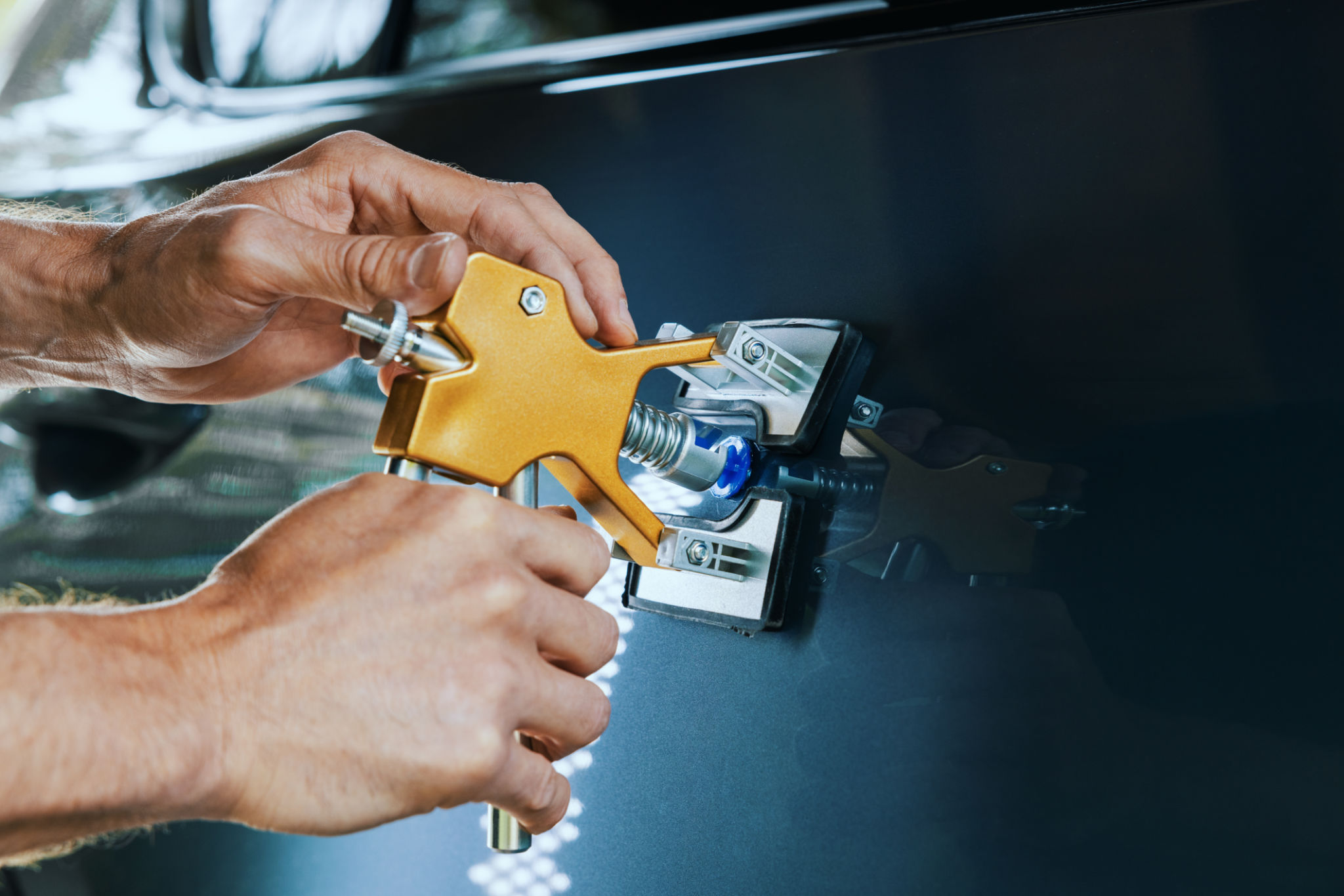How Paintless Dent Repair Works: A Step-by-Step Guide
Understanding Paintless Dent Repair
Paintless Dent Repair (PDR) is a revolutionary technique for removing minor dents and dings from the body of a vehicle without disturbing the paint finish. This method is not only cost-effective but also environmentally friendly, as it eliminates the need for fillers, sanding, and repainting. Let's dive into how this process works step-by-step.

The Tools Used in PDR
Professionals use a variety of specialized tools in PDR to meticulously massage and reshape the metal back to its original form. These tools include rods, body picks, and hammers of various sizes and shapes designed to access the back side of the panel. The choice of tool depends on the location and severity of the dent.
Rods and Picks
Rods and picks are inserted behind the panel to push out dents from the inside. These tools enable technicians to access difficult-to-reach areas, allowing for precise control over the repair process.
Tapping Tools
Tapping tools, such as hammers and knockdown tools, are used on the exterior of the panel to gently tap down high spots, ensuring a smooth finish without damaging the paint.

The PDR Process
The PDR process begins with a thorough assessment of the damage. Technicians evaluate the size, depth, and location of the dent to determine whether PDR is a suitable option. Once approved, they proceed with the repair using a series of meticulous steps.
Accessing the Dent
The first step involves gaining access to the back side of the dent. In many cases, technicians may need to remove panels or other components to reach the area effectively. This step is crucial for ensuring precise manipulation of the metal.
Applying Pressure
Using the appropriate tools, technicians carefully apply pressure to the dent from behind, gradually working it out. This process requires patience and skill, as excessive force can damage the panel or paint finish.

Final Touches and Quality Check
After reshaping the metal, technicians perform a final inspection to ensure that the surface is flawless. They may use special lights or reflections to detect any remaining imperfections.
This step is crucial as it guarantees that no evidence of the dent remains, restoring the vehicle's body to its pre-damage condition. The result is a smooth, factory-like finish that maintains the vehicle's value.
The Benefits of Paintless Dent Repair
PDR offers several advantages over traditional dent repair methods. It is typically faster and more affordable, as it avoids labor-intensive processes like sanding and repainting. Additionally, PDR maintains the original factory paint, preserving your vehicle's appearance and resale value.
Furthermore, because PDR doesn't involve chemicals or paints, it is an environmentally friendly choice that minimizes waste. This method not only saves money but also supports sustainable practices in auto repair.

